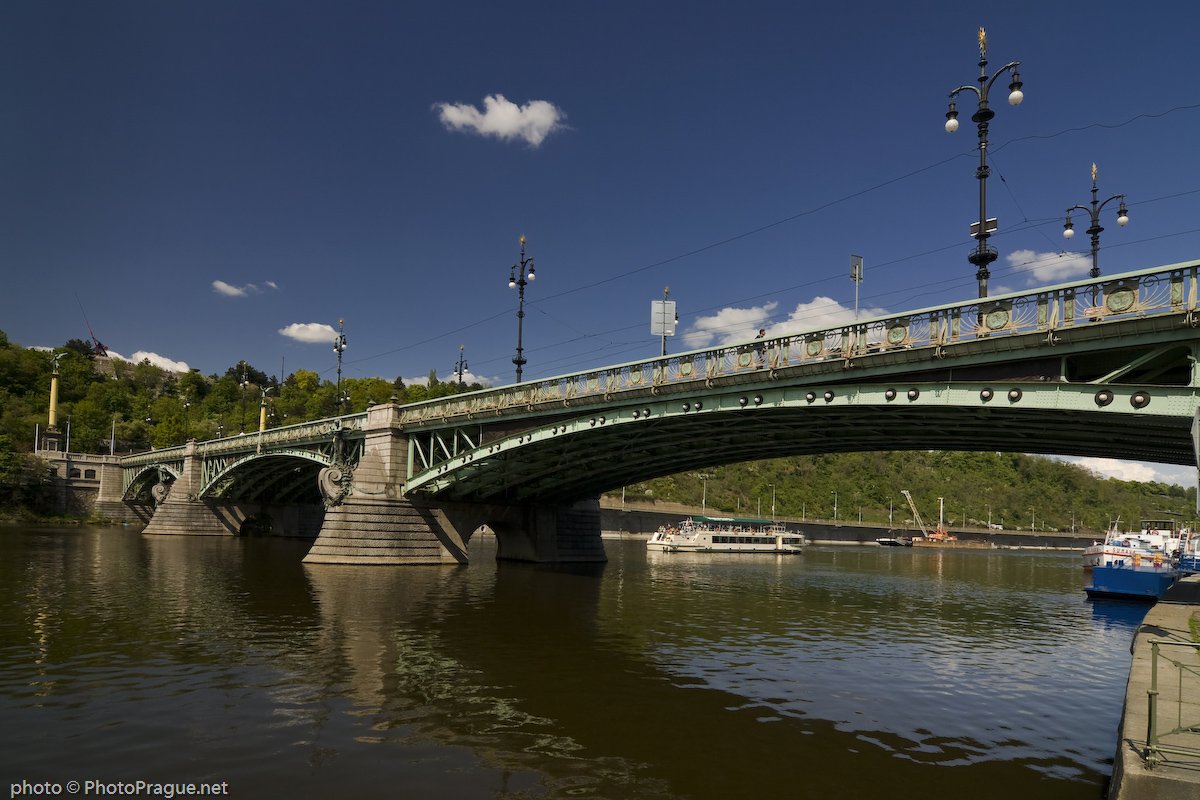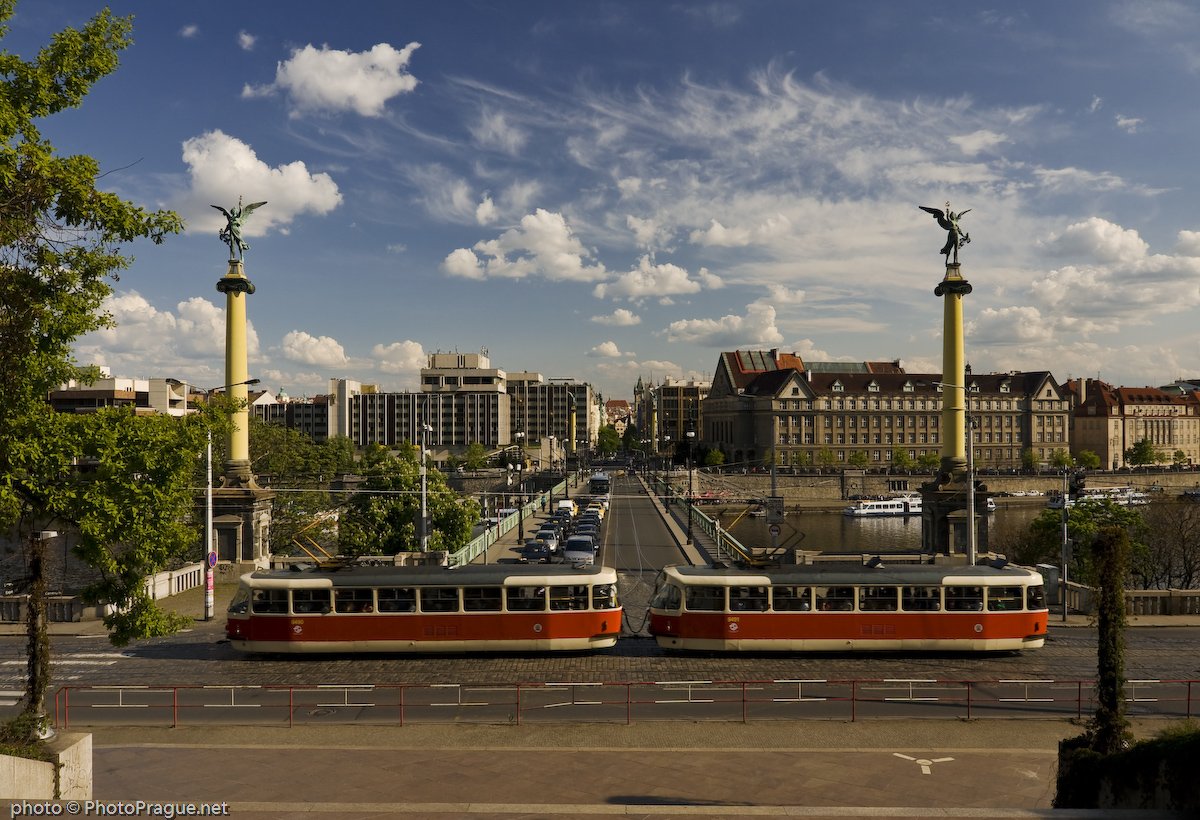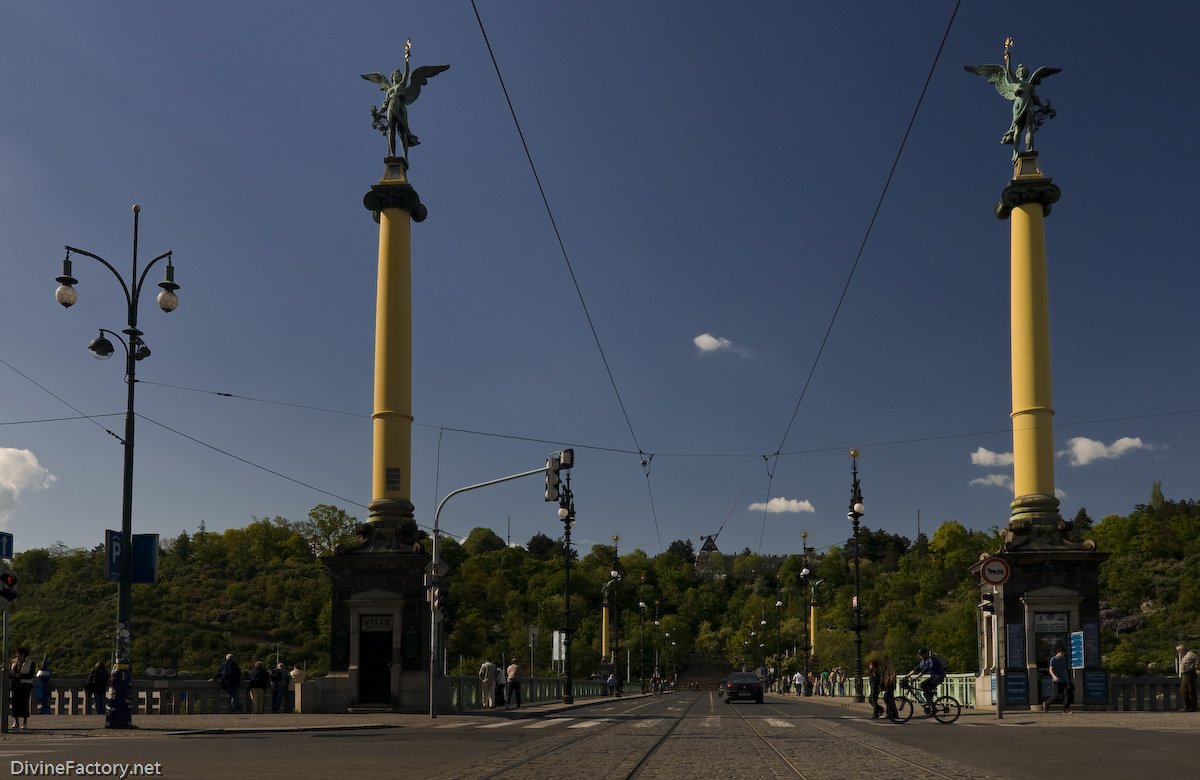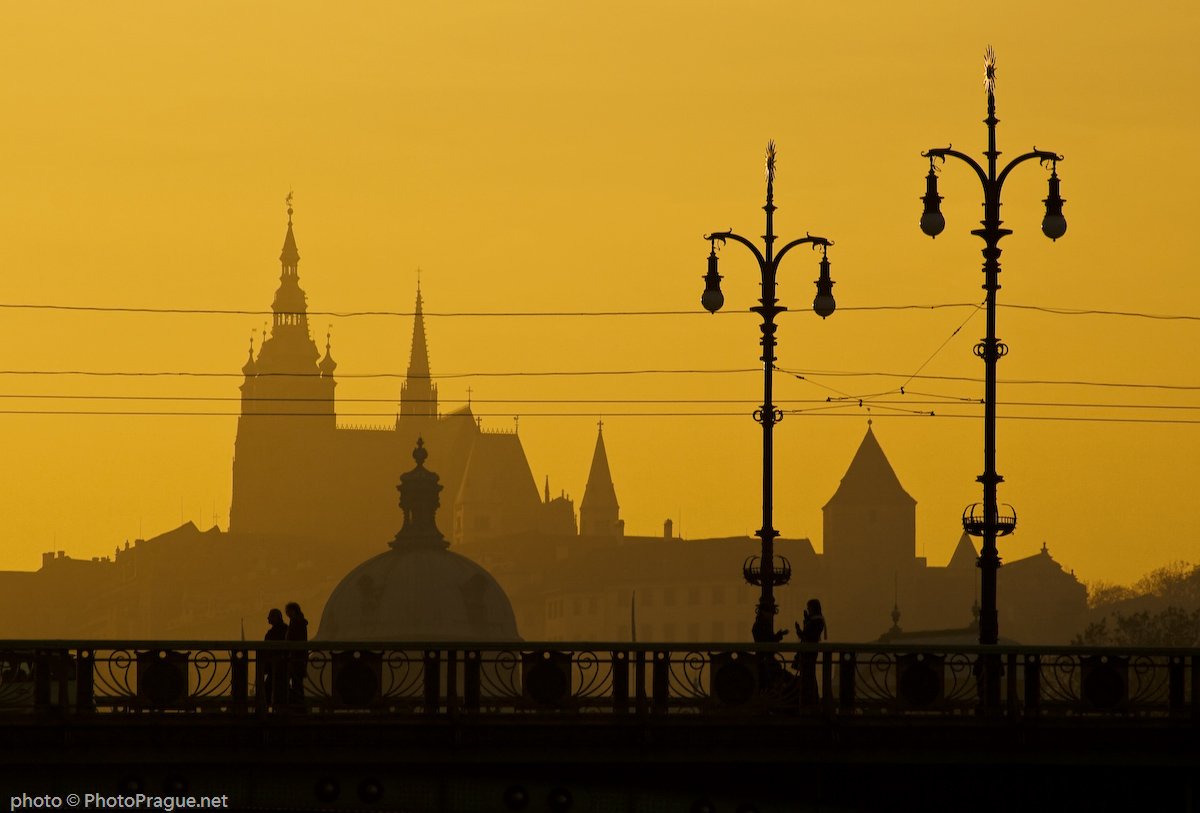The symbolic gate and reminder of the belle époque around 1900...
The Art Nouveau Čechův Bridge, from the very beginning of the 20th century is, with its iron construction, reminiscent of the period’s industrial buildings, but the decoration clearly refers to the spectacular houses and commercial palaces of the period. Its design also shows traces of the Alexander III Bridge in Paris, which became one of the symbols of the World Exhibition of 1900. The Čechův Bridge is not only a unique example of Art Nouveau architecture, but also proof of the boom the city was enjoying during the belle époque.
The Čechův Bridge was deliberately built on the axis of Pařížská Street, the main street of the fancy quarter built on the site of a former Jewish ghetto. Today, the bridge ends on a slope under Letná, but according to the plans of architect Jan Koula, it was meant to connect to an opening of the slope with a triumphal gate that would have made the bridge and the street in both directions the main avenue of Prague. Traces of this audacious plan can still be seen, for example in that from the Old Town, the bridge visibly rises towards the now non-existent avenue that was to have been dug in the Letná hill.
Apart from that, the bridge had, from its very conception, another role to play – it was to be a symbolic gateway to the city, as can be seen in the decoration. On the side away from the city, link-boys with torches greet the pilgrims, wishing them health and safe passage across the turbulent waters of the Vltava. On the other side, incoming boats are greeted by six-headed hydras which guard the city against unwelcome guests.




